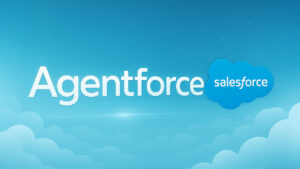- Adam Mansfield
- Reading Time: 3 minutes

Salesforce recently made some announcements that will impact go-forward pricing, packaging, and the way customers will pay for Agentforce. These changes reflect a clear push toward maximizing AI adoption and revenue growth. Here is a breakdown of the impactful Salesforce announcement and what customers can do to get ahead of them.
Key Changes at a Glance
6% List Price Increase
Prices for Salesforce’s Enterprise and Unlimited Editions of the core Salesforce clouds (Sales, Service, Field Service, and select Industry Clouds) will increase by 6%. Salesforce attributes this hike to “significant ongoing innovation and customer value.” Salesforce did note that Foundation, Starter and Pro Editions will be untouched. If you’re facing this increase, now is the time to revisit your pricing structure and look for areas to reduce Salesforce costs.
Price increases like this are also tied to pushing customers towards the most robust option/edition available, like the new Agentforce 1 Edition. By increasing the Unlimited Edition price from $330/u/m to $350/u/m, it closes the gap between it and Agentforce 1 Edition. These tactics are not Salesforce tactics. Many, if not all, enterprise software vendors do this (see Microsoft 365 E3 price increases).

Agentforce Add-Ons and Editions
Additional options are now generally available to customers interested in Salesforce’s Agentic AI offering “Agentforce.” The Agentforce Add-On ($125/user/month) includes unlimited AI agent usage, pre-built role-based templates, Tableau Next, and Prompt Builder.
This is Salesforce’s way of addressing concerns customers have likely voiced regarding the previous “consumption-based” licensing/pricing models. Specifically, this is meant to address the original $2 per conversation model and then the $.10 per action under the Flex Credits option presented to customers back in May.
The Agentforce 1 Edition ($550/user/month) was also made available in this announcement. This is the newest and most robust edition available to Sales, Service, Field Service and Industry Cloud customers. It includes:
- Everything included in the Afentforce Add-Ons
- Bundled cloud-specific product add-ons
- 1M Flex Credits per organization per year
- One action consumes 20 Flex Credits, so this equates to 50,000 AI actions per year
- Swap rights between users and Flex Credits
- Data Cloud with 2.5M Data Services Credits per organization per year
- New Slack Enterprise+
Slack Pricing and Packaging Changes
The Slack Business+ list price jumps 20%, from $12.50 to $15/user/month. This has been justified by “advanced AI capabilities.” Salesforce has also introduced a Slack Enterprise+ plan that bundles Slack with Agentforce., This plan, also available as part of the Agentforce 1 Editions, offers searching capability tied to messages, customer data, and external apps simultaneously. To help further drive Slack usage, Basic Slack access is now available to all Salesforce customers through Salesforce Channels.
These changes align with broader Salesforce product strategies, like Salesforce’s product shifts and bundling strategies, which are designed to drive AI adoption and long-term customer lock-in.
How Salesforce Customers Can Get Ahead of These Updates
Salesforce is pushing hard to get customers to start using Agenforce and pushing even harder to get customers to grow their usage as quickly as possible. This all ties to the goal of accelerating revenue growth through the “flywheel” effect that comes with consumption-based pricing. Here are some tips for taking back control amidst these changes.
Getting Ahead of Salesforce Price Increases:
- Review Your Contracts and Renewal Terms: Hopefully customers have renewal price protections already in place, like a cap on the price increase Salesforce can apply at renewal. If not, we recommend making it clear at the start of any renewal proposal discussions that an arbitrary 6% price increase will not be well received.
- Push Back with Data: Challenge their reasoning for price hikes. Request feature adoption reports and usage data. For those customers that have not gotten the full value out of the product getting hit with the price uplift, it would be impactful to remind Salesforce of this.
How to Tack Your Interest in Agentforce:
- Clarify Definitions and Overages: Insist terms like “actions,” “usage,” and “data credits” are clearly defined in your contract. It is not sufficient for Salesforce to provide generic definitions found on their website and in sales collateral. Challenge Salesforce to not only provide clear definitions but also examples that are tailored to your company.
- Future Price Certainty: Ask Salesforce what pricing will look like when thresholds are eclipsed. Salesforce needs to provide commitments as to what happens when the number of conversations or actions in your order form are surpassed. Push for a volume discount structure, and make sure the achieved renewal term price protection covers Agentforce.
- Arm Yourself with Insights Slack Business+ customers should review contracts for protections and analyze usage now, so you can engage Salesforce and your Slack rep before the upcoming price increase appears in your renewal proposal.
The Bottom Line
Salesforce’s announcements are more than just cost increases and new Agentforce flexibility. They’re a push to create leverage in renewal negotiations (including steering customers toward the options or editions Salesforce prefers) and to drive AI usage and consumption. Now is the moment to act: understand your usage, push back with data as granular as possible, and gather internal alignment.
UpperEdge’s Salesforce Commercial Advisory Services deliver tailored strategies, deep market benchmarks, and seasoned guidance to help you confidently respond to Salesforce’s evolving tactics. If your organization is evaluating Agentforce, facing a renewal, or simply unsure how these changes affect your bottom line.
Related Blogs
Don’t Let Divestitures Undermine Your Salesforce Negotiation
SaaS Price Increases: What If Vendors Only Charged More When You Got More?
Salesforce’s New Agentforce Pricing: What Customers Should Know
About the Author
